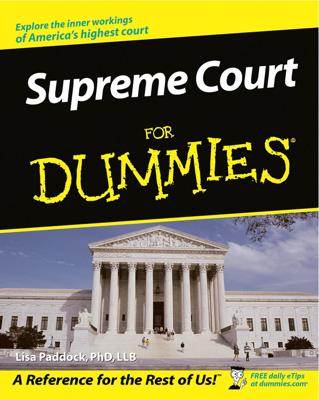The death penalty, also known as capital punishment or execution, is the sentence of death imposed by courts as punishment for a crime. People who receive the death penalty typically are convicted of murder and similar capital crimes like aggravated murder or felony murder. State legislatures establish the death penalty and set forth the offenses that may be punished by death.
History of the death penalty in the United States
Michigan was the first state to ban the death penalty in 1846. In 1972, the Supreme Court ruled in Furman v. Georgia, that the death penalty cannot be applied arbitrarily or capriciously, leading to an effective moratorium as state legislatures struggled to harmonize state statutes with the Court’s ruling. In 1976, the Supreme Court decided Gregg v. Georgia, which clarified the circumstances where the death penalty is permitted.
The Supreme Court held that state legislatures may carefully craft death penalty statutes provided the sentencing schemes provide objective criteria to direct and limit discretion by a judge or jury (and be subject to review by appellate courts), and the scheme must allow the sentencing authority to consider the character and record of each individual defendant.
Currently, 16 states and the District of Columbia ban capital punishment. Of the states where the death penalty is permitted, California has the largest number of inmates on death row, while Texas carries out the most executions.
The Death Penalty Information Center publishes a useful fact sheet detailing many issues involving the death penalty.
In September 2011, the case of Troy A. Davis catapulted debate over the death penalty back into the forefront of public discussion. The State of Georgia executed Davis on September 21, 2011 for the 1991 murder of a police officer despite a lack of forensic evidence, a potential alternate suspect, several witnesses who recanted their original testimony and a large outpouring of public support for clemency.
Is the death penalty cruel and unusual punishment?
The death penalty is not a per se violation of the Eighth Amendment’s ban on cruel and unusual punishment as it is a proportional punishment for some crimes, particularly murder. A state cannot apply the death penalty, however, for the rape of an adult woman because it violates the proportionality requirement (Coker v. Georgia). In addition, the penalty is categorically unavailable for cases of child rape in which the victim lives (Kennedy v. Louisiana).
Allowable methods of execution
A legislature may prescribe the manner of execution but the manner may not inflict unnecessary or wanton pain upon the criminal. State and federal courts have affirmed hanging and electrocution as methods of execution. In 2008, the Supreme Court held that lethal injection did not constitute a cruel and unusual punishment (Baze v. Rees).
Classes of persons not eligible for the death penalty
The Supreme Court prohibited executing "mentally retarded" criminals because their mental handicap lessens the severity of the crime and therefore renders the penalty of death disproportionately severe (Atkins v. Virginia). Similarly, juvenile offenders may not be sentenced to death due to their diminished culpability based on teenagers’ lack of maturity, greater vulnerability to negative influences, and incomplete character development (Roper v. Simmons).
Arguments in favor of the death penalty
Proponents commonly assert the death penalty serves several important purposes, including
Deters crime by setting an example for other potential criminals.
Punishes the criminal for his/her act.
Promotes retribution on behalf of the victims.
Provides a useful law enforcement tool that supports police and prosecutors (in plea bargaining for example)
Improves the community by making sure that convicted criminals do not offend again.
Provides closure for victims of crime.
Renders a just penalty for murder.
Arguments opposed to the death penalty
Opponents argue that many reasons support abolishing the death penalty, including the following (borrowed from the National Coalition to Abolish the Death Penalty):
Executions cost taxpayers far more than keeping a prisoner for life.
Capital punishment does not deter crime any more than sentences of life without parole.
States are unable to prevent accidental executions of innocent people.
Race plays a role in determining who is sentenced to death.
The death penalty is applied at random.
Capital punishment violates the principles of almost every religion.
The U.S. joins notorious human rights abusers like China, Iran, and Saudi Arabia
Millions of dollars could be diverted to helping the families of murder victims.
Bad lawyers are a persistent problem as most death row inmates had inadequate legal representation.
Life without parole is a sensible alternative to the death penalty.
International views about court-ordered executions
Currently, 58 nations actively practice capital punishment while 96 countries have abolished it. Article 2 of the Charter of Fundamental Rights of the European Union prohibits the use of capital punishment. The UN General Assembly has adopted non-binding resolutions calling for a global moratorium on executions.
Over 60 percent of the world’s population lives in countries where executions take place, namely China, India, the U.S., and Indonesia. Each of these four nations voted against the U.N. resolutions. Among non-governmental organizations, Amnesty International and Human Rights Watch are noted for their opposition to capital punishment.
Public opinion on the death penalty
Majority populations in Canada, Australia, New Zealand, Latin America, and Western Europe oppose the death penalty (except the United Kingdom). Surveys in the U.S. have long shown a majority in favor of capital punishment.
An ABC News survey in July 2006 found 65 percent supported capital punishment. About half the American public says the death penalty is not imposed frequently enough and 60 percent believe it is applied fairly, according to a May 2006 Gallup poll. Surveys also show the public equally divided, however, when asked to choose between the death penalty and life without parole.

